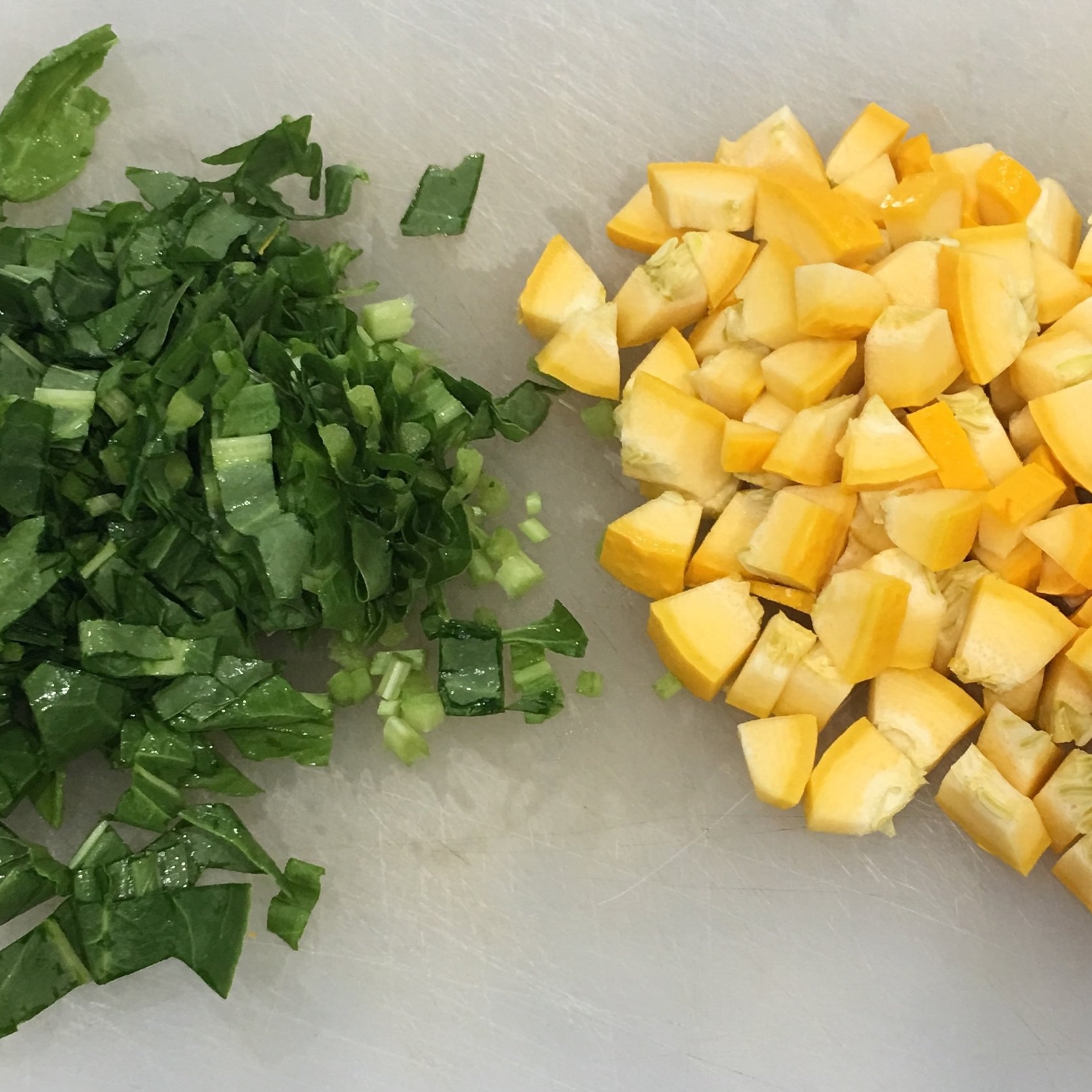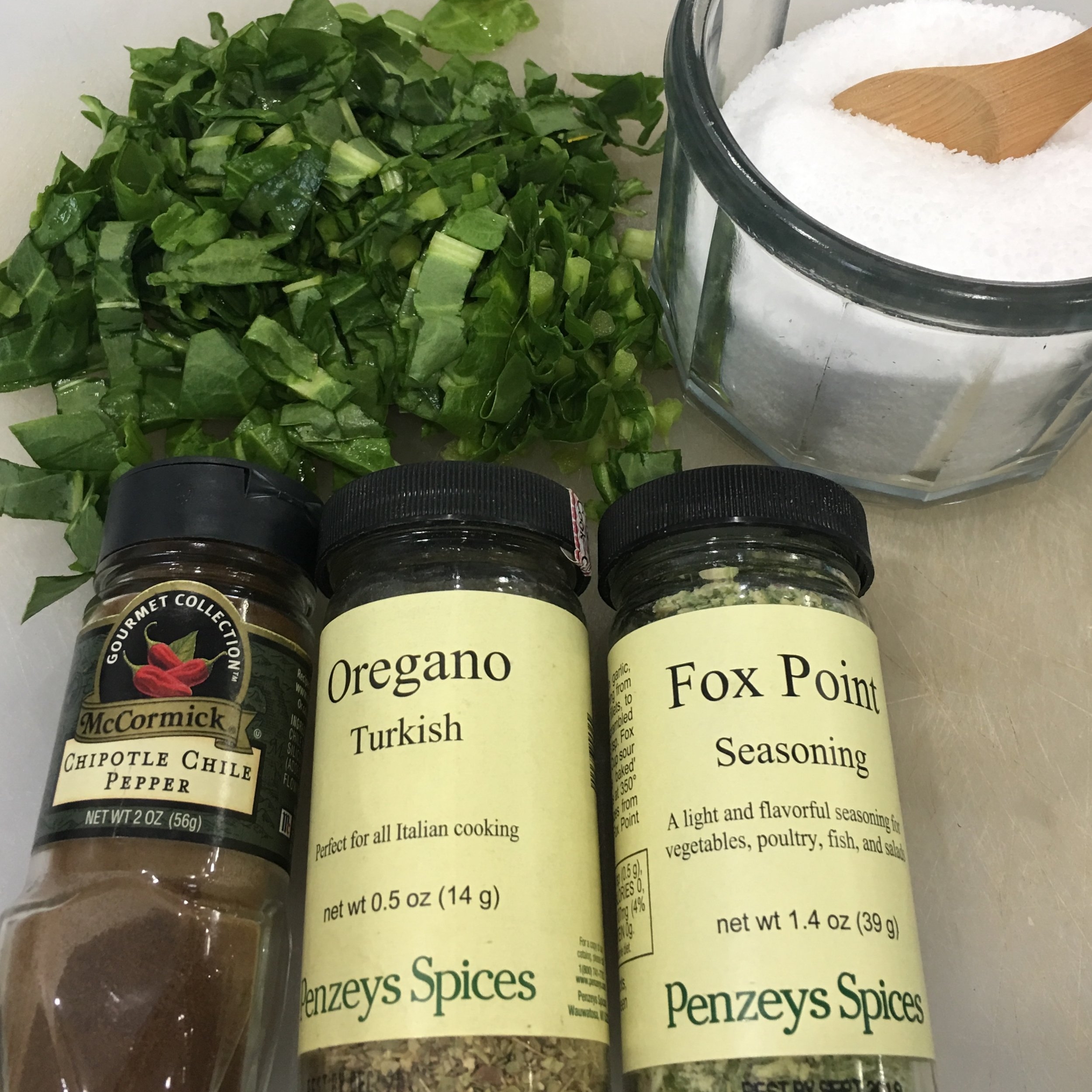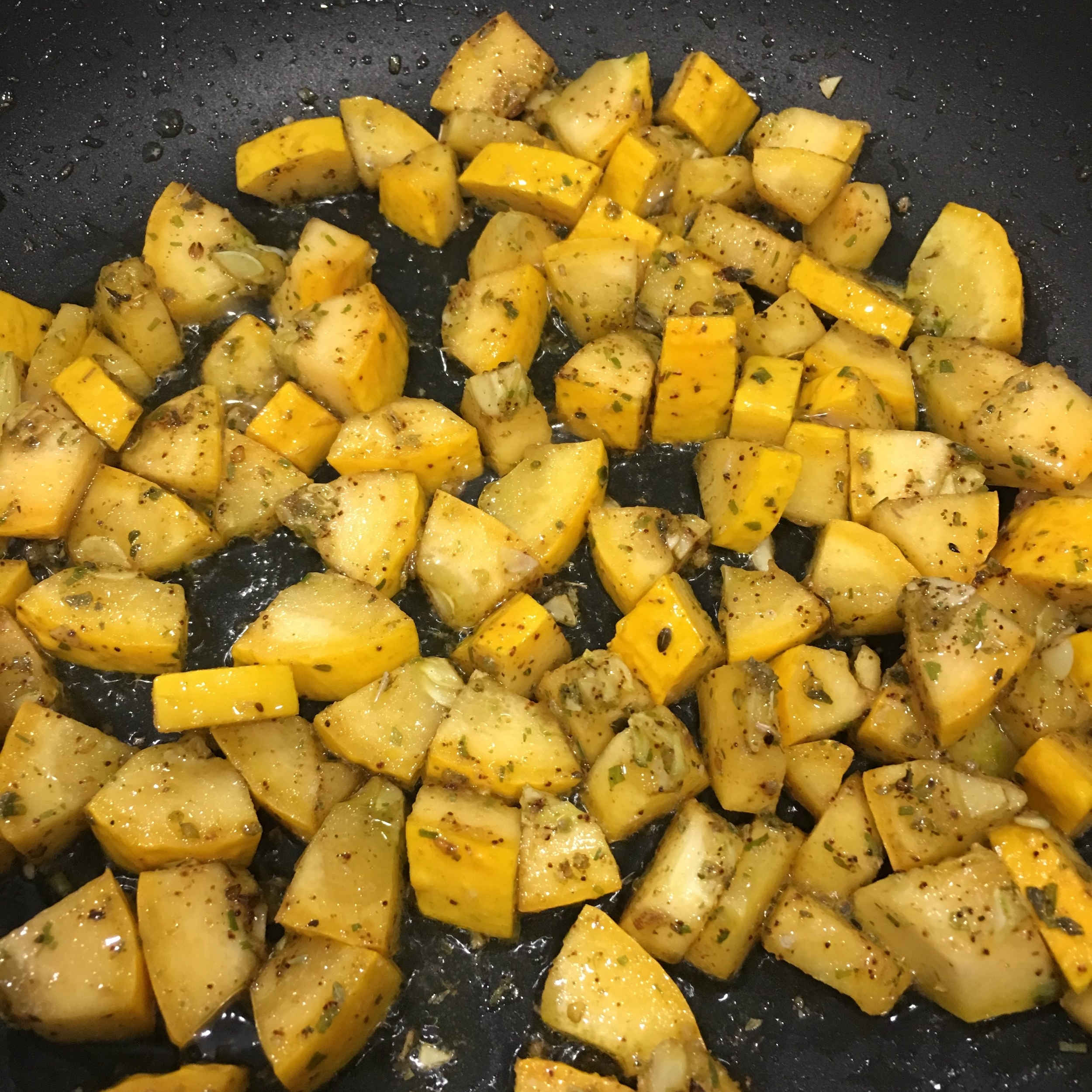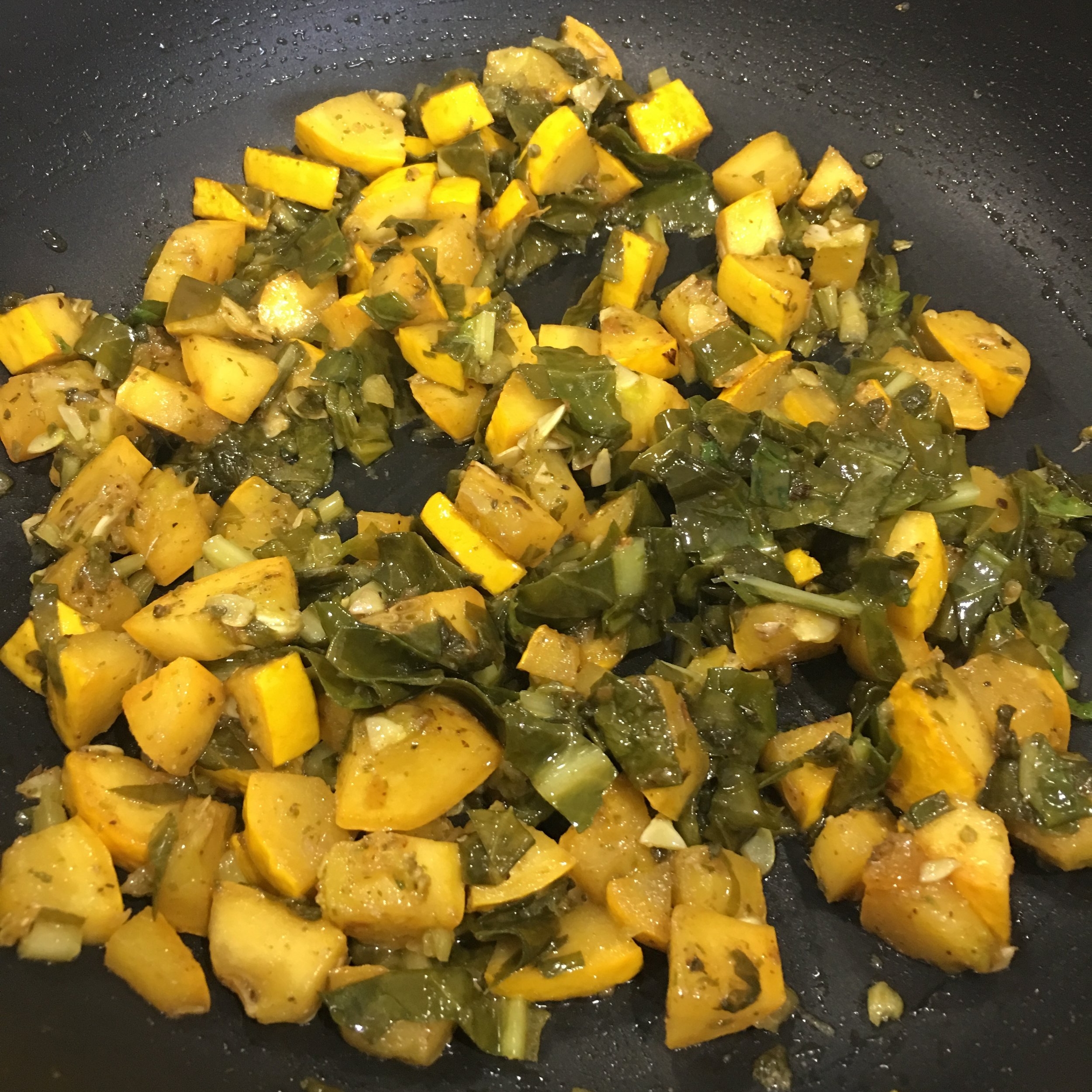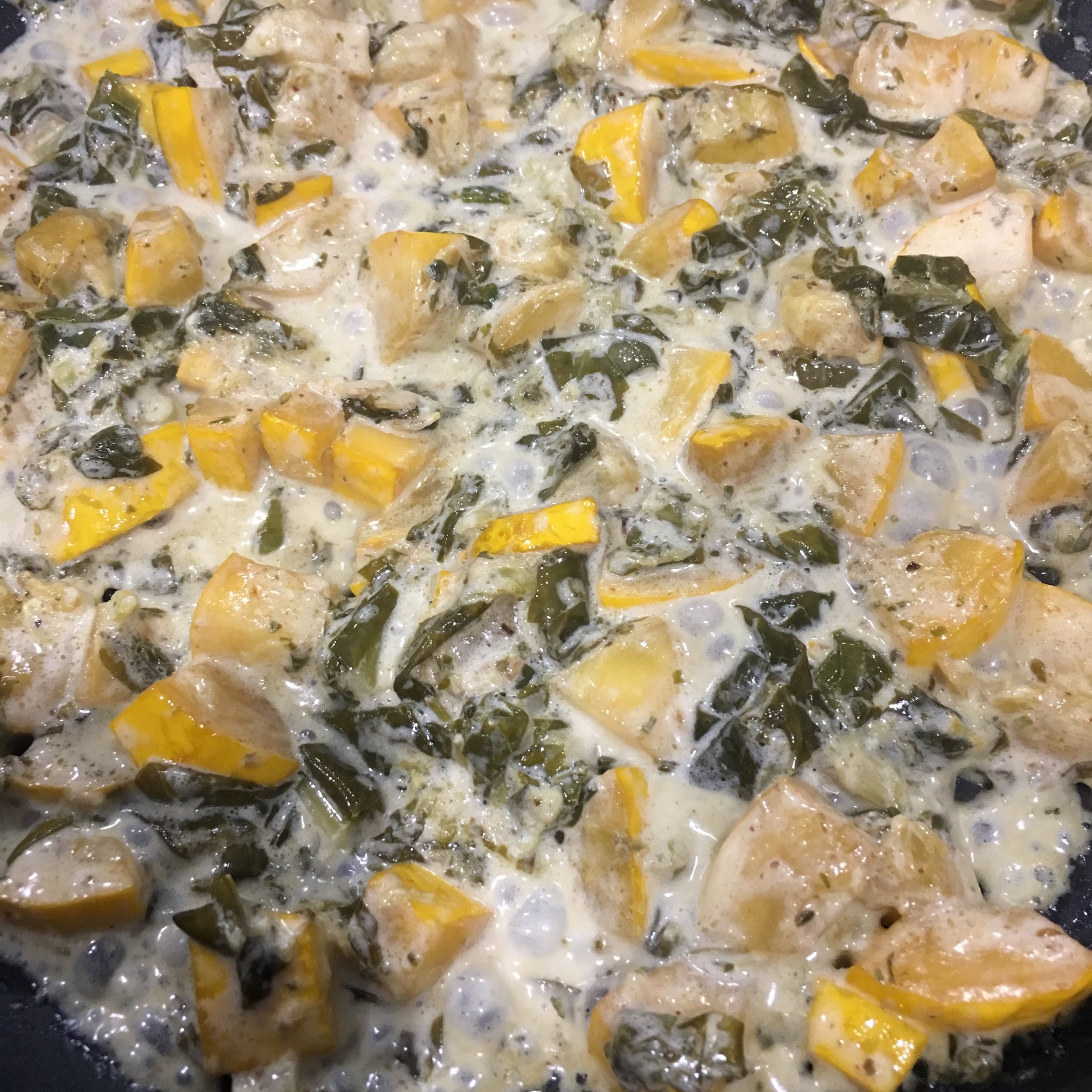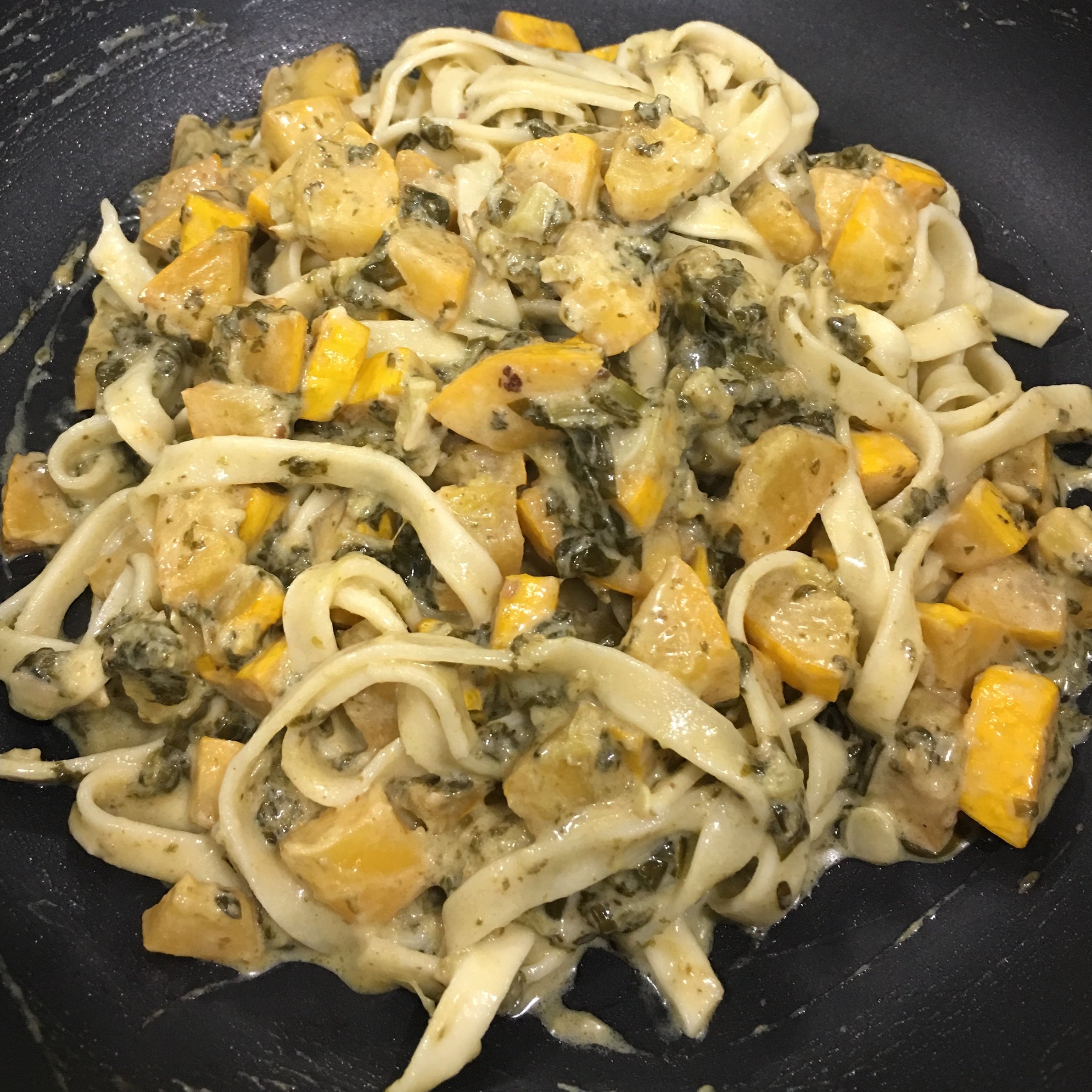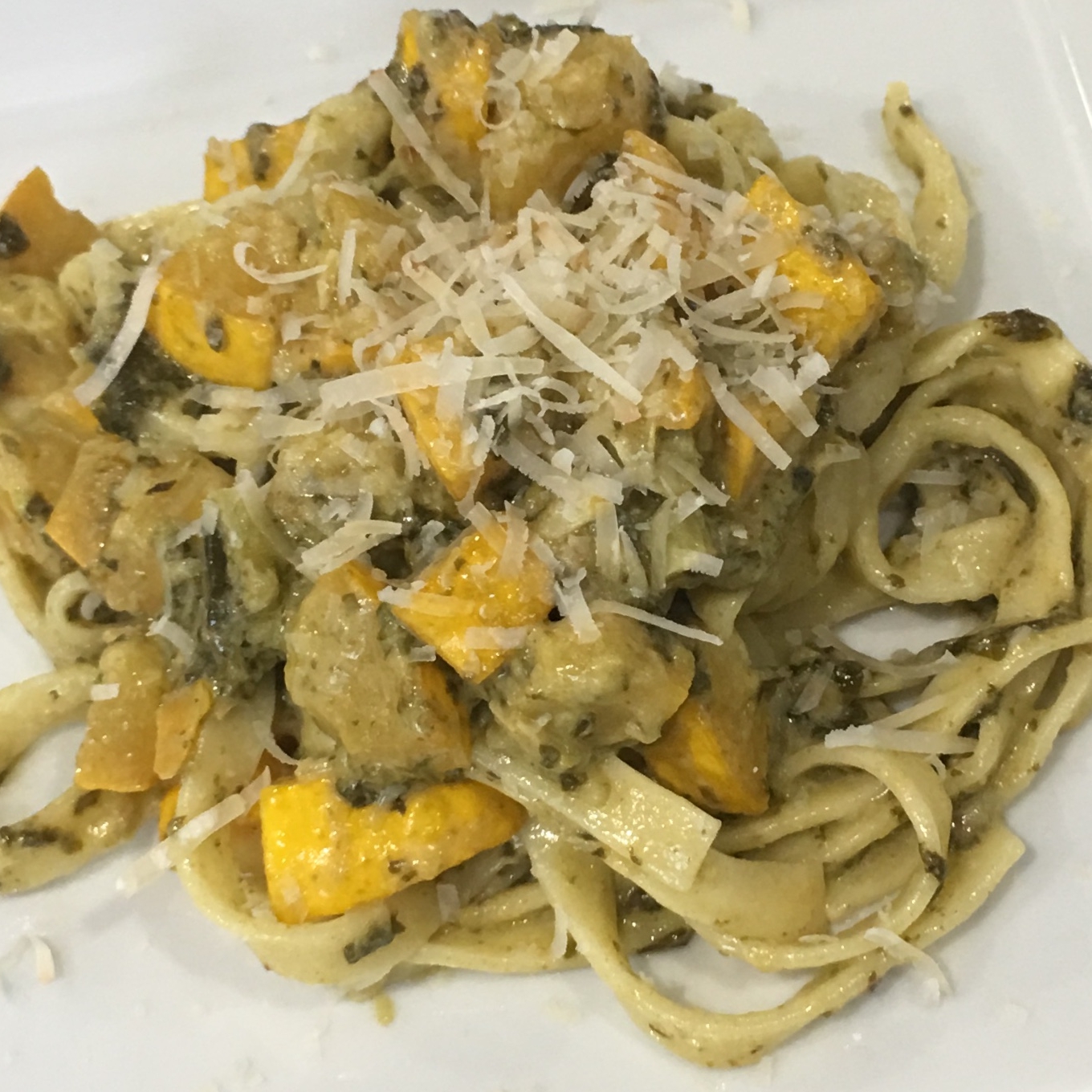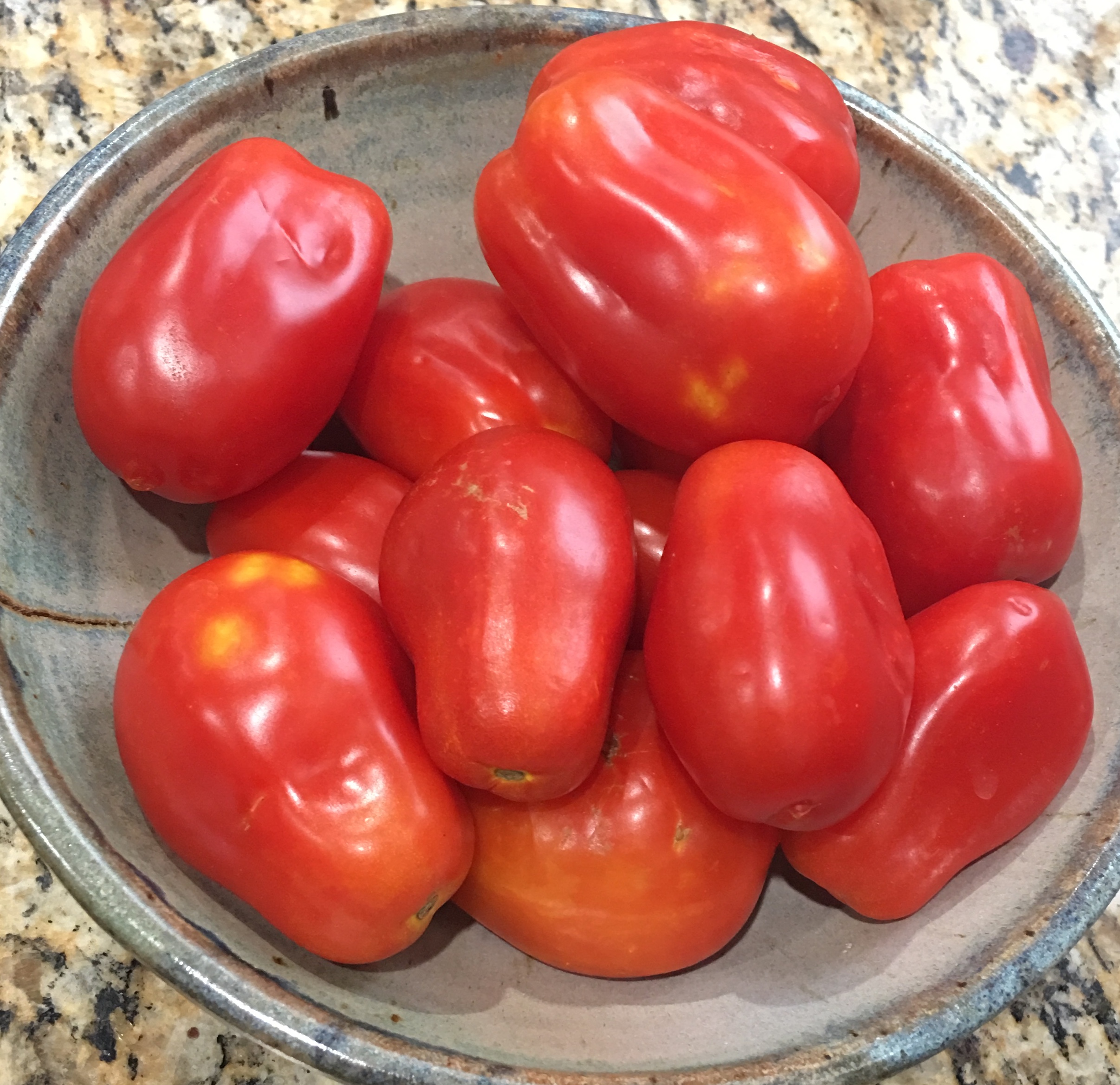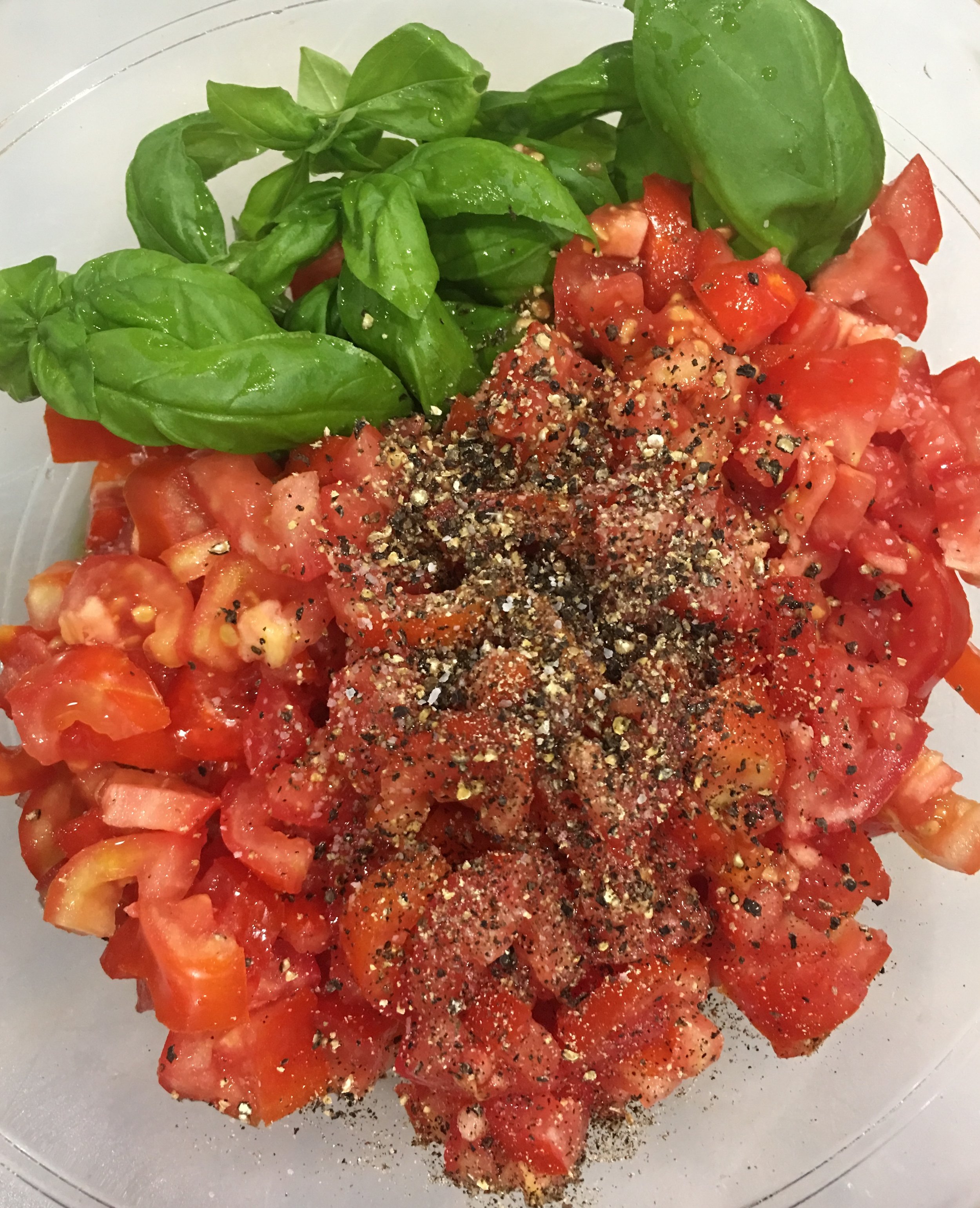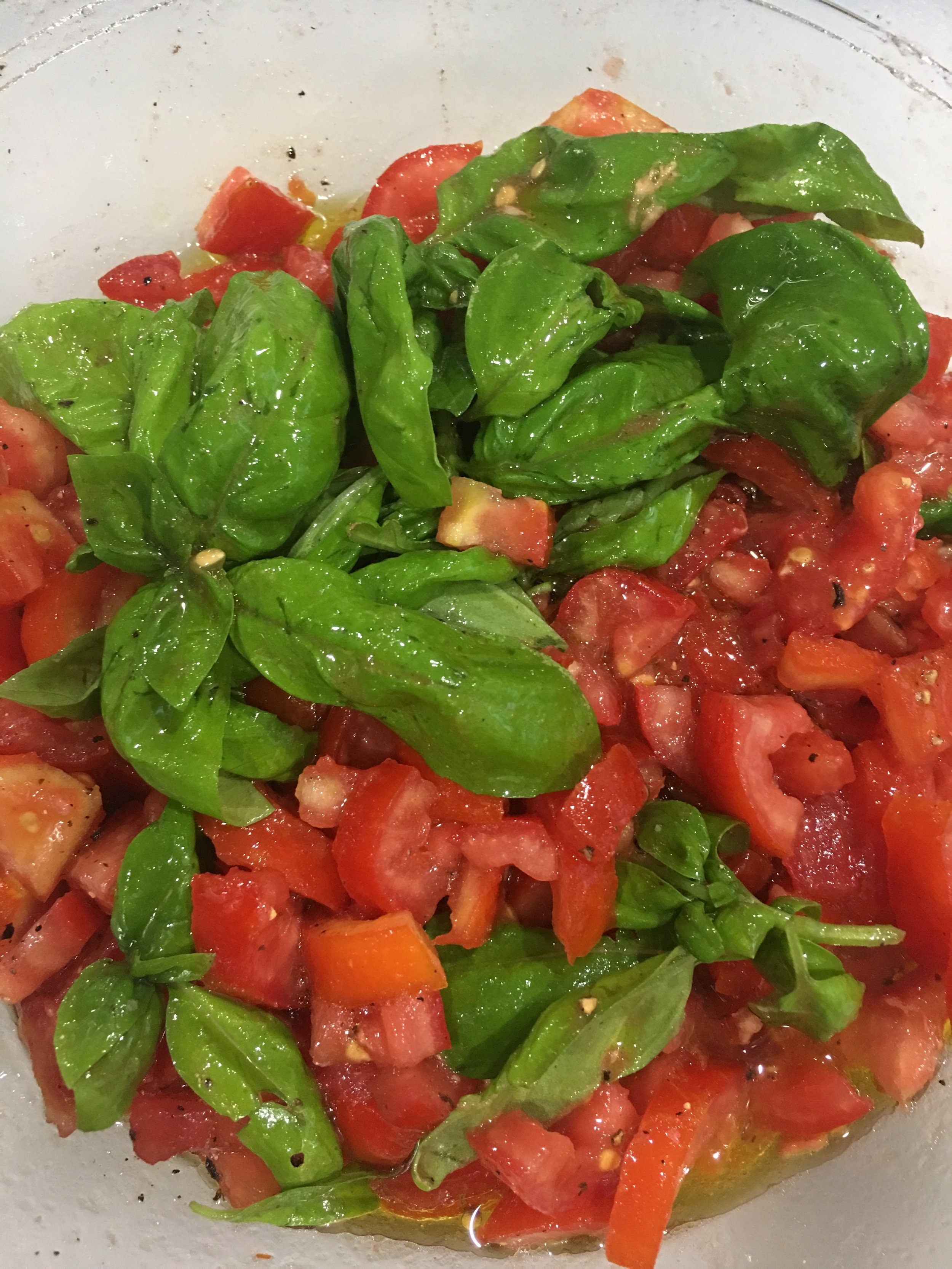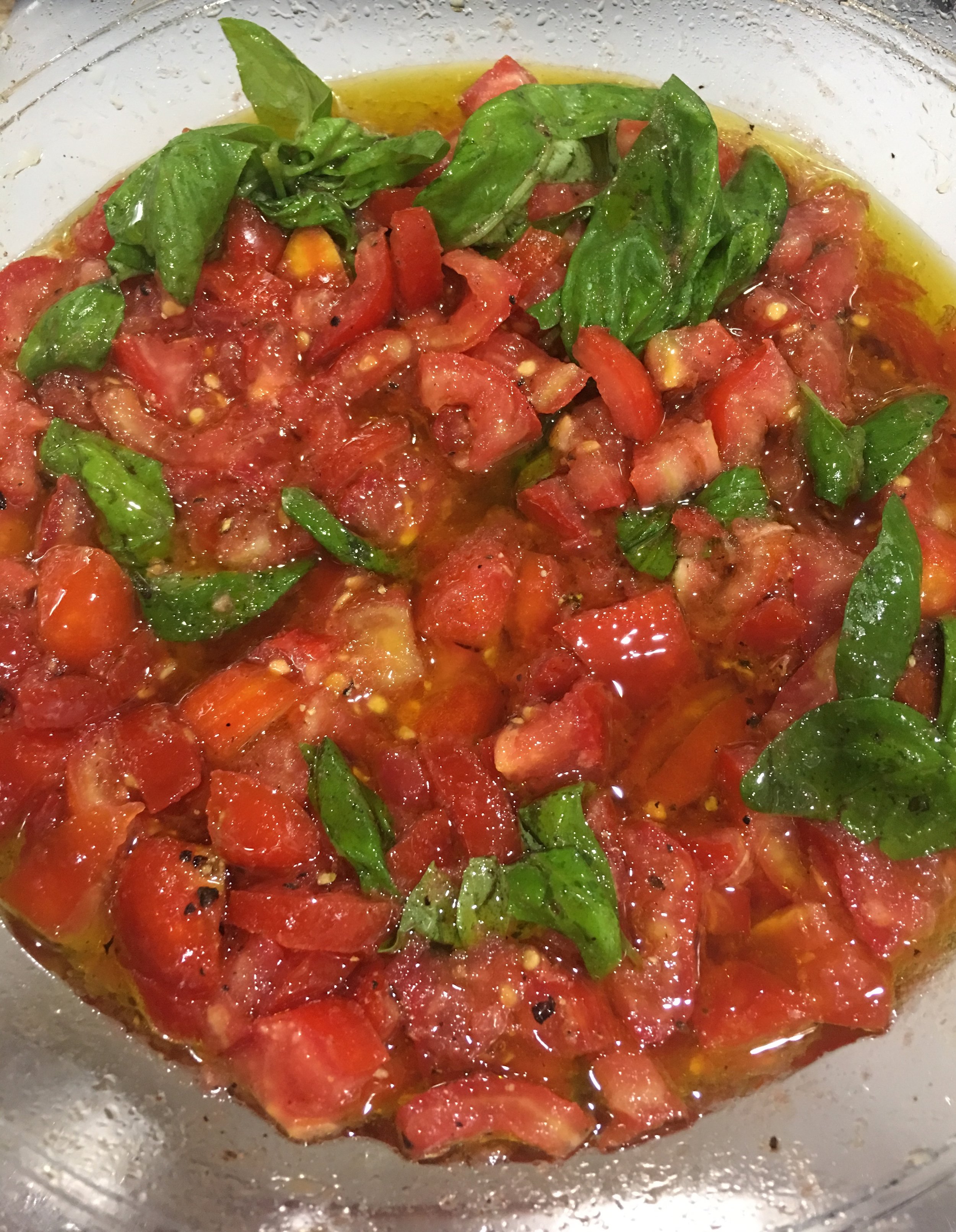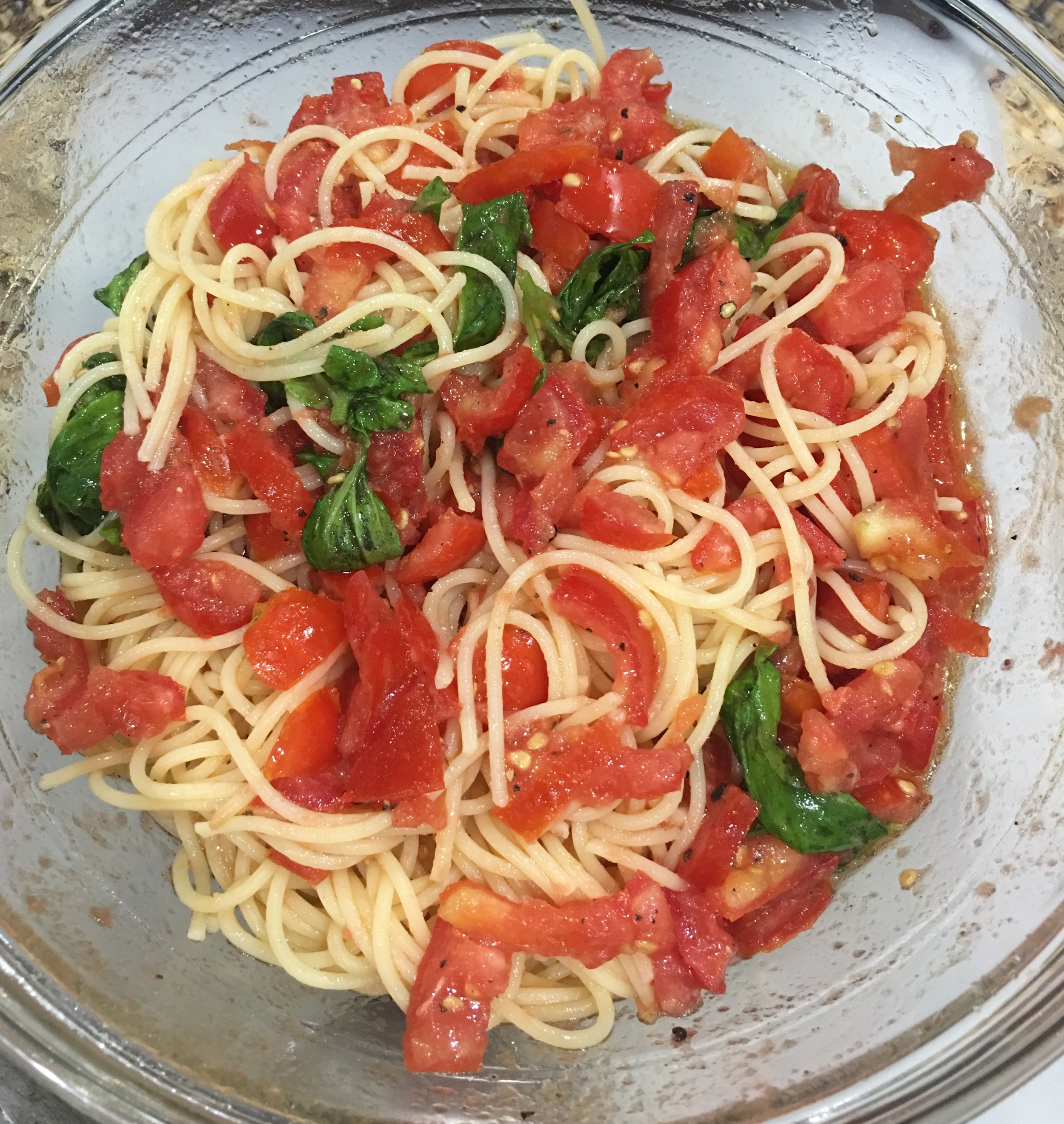Sorrel is a nutrition packed summer green that’s deliciously tart, and can be added to salads, pesto and so much more. It’s not always readily found, but if you can get your hands on it, you should try it. It’s lemony tartness is fragrant, without the sweetness of lemon. There are multiple different varieties; some are all green, some have beautiful red and pink variegated leaves. I have made sorrel/chard and ricotta soup in the past. I love sorrel and parsley pesto with pecans taking the place of pine nuts to add a little sweetness, and balance the tartness from the sorrel.
Today, the bunch of sorrel in my farmers’ market basket paired with summer yellow squash, some dried herbs from the pantry and a fresh pasta from my freezer to make a light, easy and healthy lunch. The vegetables are clearly the stars here, fresh from the farm.
Sorrel is nutritious and a good source of fiber. It’s rich in vitamins A and C, B6, magnesium and iron. As always, a little added fat will help your body absorb the vitamin A. You can certainly skip the cream and pasta and eat the sautéed vegetables on their own. This recipe can be easily scaled up with more vegetables and pasta.
So easy, delicious, nutritious and pretty. My husband said he would eat it everyday. I hope you like it.
RECIPE: Sorrel & Summer Squash Pasta
INGREDIENTS
- 4 to 6 oz fresh pasta (you can use 2-3 oz 0f your favorite dried as well)
- 2 teaspoons extra virgin olive oil
- 1 teaspoon dried oragano
- 1 teaspoon Penzey’s Foxpoint Herb Mix
- 1/4 teaspoon chipotle powder
- 1/3 teaspoon sea salt
- 2 cups diced summer squash
- 2 cups chopped sorrell
- 1/4 cup heavy cream
- grated parmesan
PROCESS
- Sautee squash in olive oil with salt and spices until tender.
- Add sorrel and cream, and toss. Turn off the heat.
- Add cooked pasta and toss.
- Serve with a sprinkle of grated Parmesan.
Serves 2

